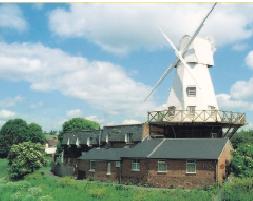
Actual documentary evidence on the history of Rye Mill is virtually non-existent. It was the subject of Victorian mezzotints and oleographs, but beyond that visual and literary records are silent. Whether a mill existed on the present site earlier than, say, 1850, is a matter of pure conjecture. We do know, however, that long before the Webb family, who used the mill for baking and bread-making before and after the Second War, came into residence the buildings had been given over to storing grain. Probably the last flour actually produced there was sold either before or during the First World War. Then the bakery was at the Mill Cottage – the old tall chimney of the bakehouse can be seen in the photographs taken in the 1920s.
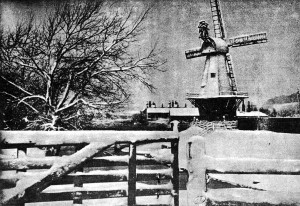
On Friday 13th, 1930, the original main building was completely destroyed by fire. A great proportion of the population of Rye crowded to the scene and eyewitnesses all reported there was a wonderful smell of new baked bread emanating from the burning building. This was one of the first fires attended by Rye’s new fire engine which was at that time still housed at the Town Hall.
Although rebuilding commenced after only three or four weeks and the entire structure was completed two-and-a-half months later, all the internal mechanisms had been irreplaceably damaged. Only the mill-stone remained, embedded in the ground near the new bakehouse door. Ellis, the builders, attempted to reconstruct the original as closely as possible, though no authentic architectural plans were available. The building is an octagonal smock mill of six stories (three completed and three unfloored). Unlike the mill at Winchelsea only the cap revolves-directed by a vane. Although a master mill-wright was employed for the joinery and sweeps no other special staff were involved. The reconstruction cost just over £800.
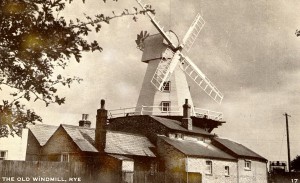
At the side and rear of the new building old stables and garages – reflections on the age when the bread was delivered either by cart or on the model-T Ford still remained. In this moment of disaster all the local bakers helped out by employing the newly-redundant staff. The lovely black-and-copper Hunts ovens which were bought to replace those damaged in the blaze were still operable and in fine condition.
During the war (during which grandfather Webb retired) most of the bread was produced specifically for the numerous garrison troops. And at one stage hostilities must have seemed very close to the bakers when an A.A. gun turned up on the mill verandah. The Y.M.C.A. transported bread and confectionary to the anti-aircraft sites around the town. The Duchess of Bedford was concerned in the operation as a driver.
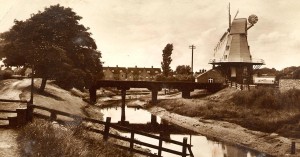
In the late sixties the mill got a new lease of life. The Webbs had considered demolishing it because of the exorbitant cost of maintenance. Twice since the war it has been repainted-once by the spray method-but because of the difficult nature of work neither had been satisfactory in result.
In 1968 a specialist company covered the entire exterior with a mixture of fibreglass and resin bonding. When completed the natural fibre finish was very satisfactory and the mill shell was saved from further expense and unsightly deterioration for many years.
In the eighties the mill became a Guest House and was extensively renovated.
The sails were damaged in high winds as late as the turn of the century but the arms were replaced and the old mill still retains its charm and landmark status.
Bringing the Old Rye Mill completely up to date it is now a very successful Guest House. Sited as it is overlooking the River Tillingham, just a couple of minutes stroll from the centre of the town it is ideally suited for this purpose.
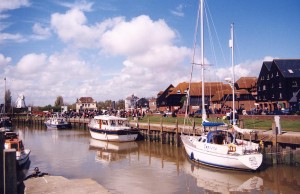
The facilities are first class. All double rooms are en-suite with colour television. There is private on site parking, a small licensed bar and Italian, French and Spanish are spoken by current proprietors the Elliotts, making it a welcoming place for European visitors to spend their time in Rye.